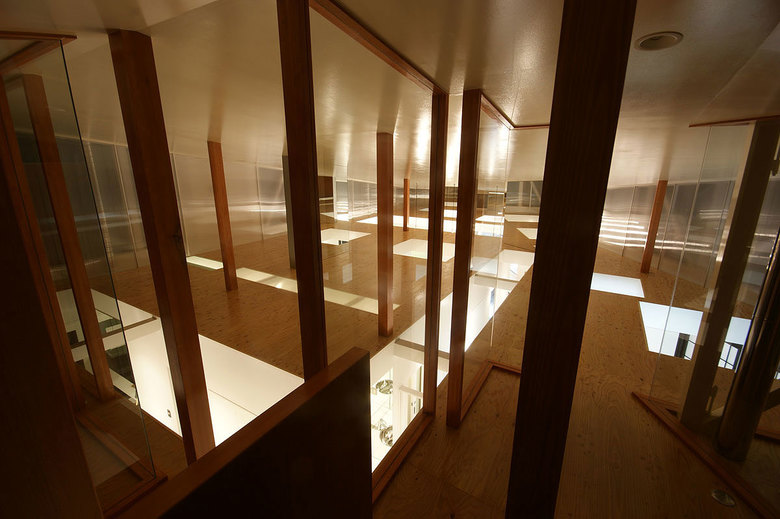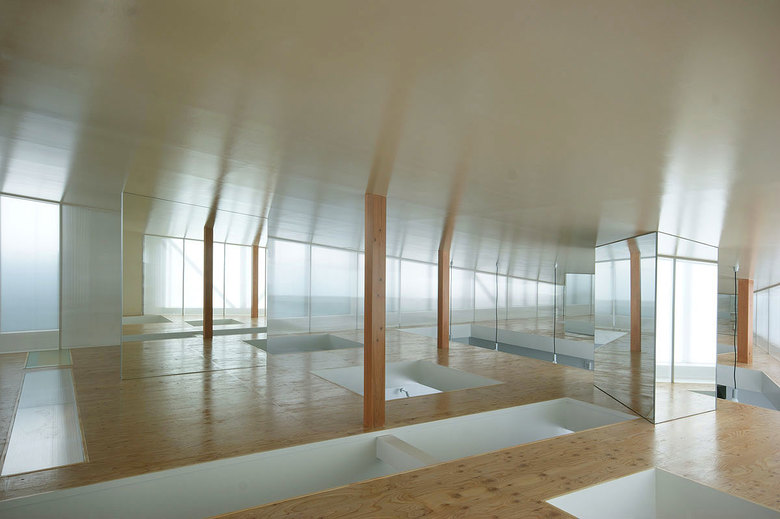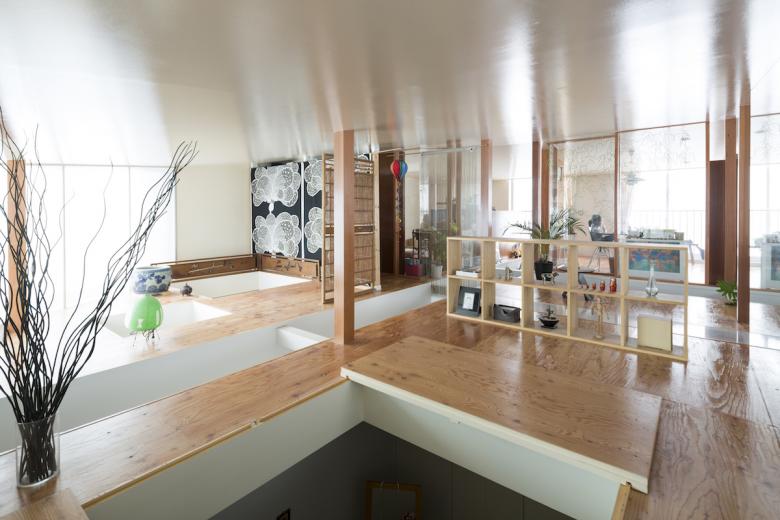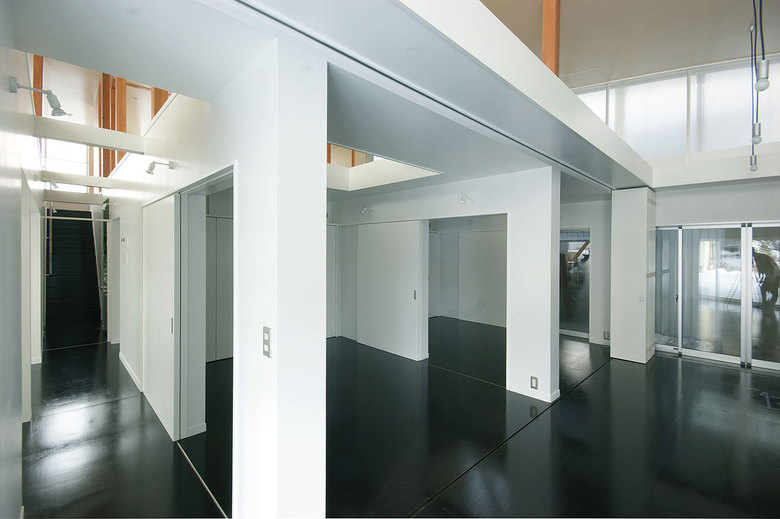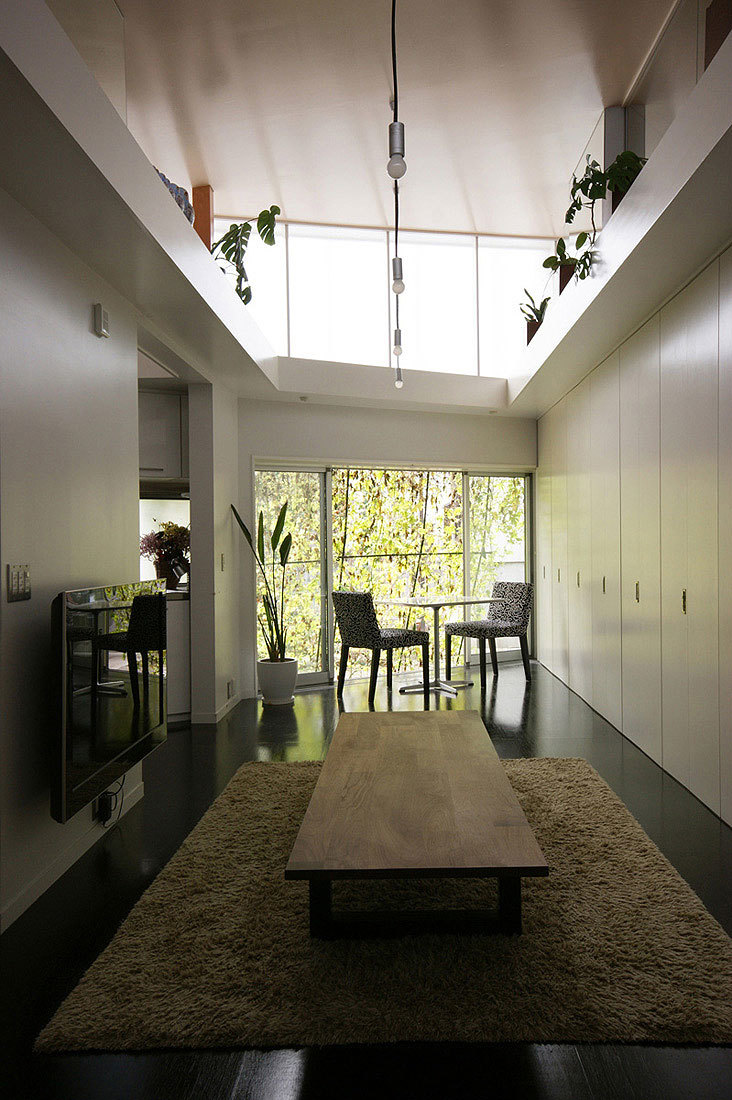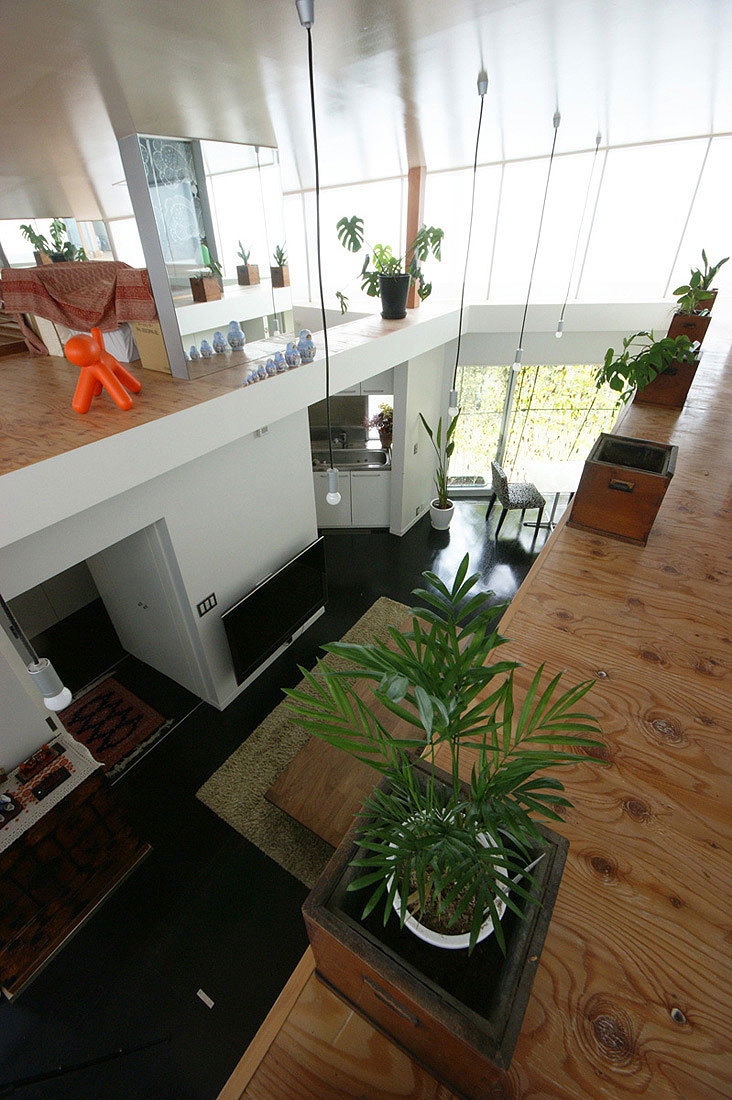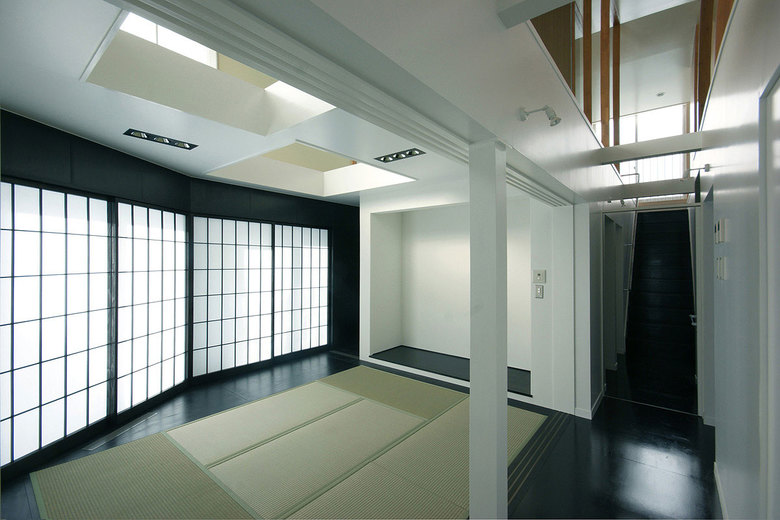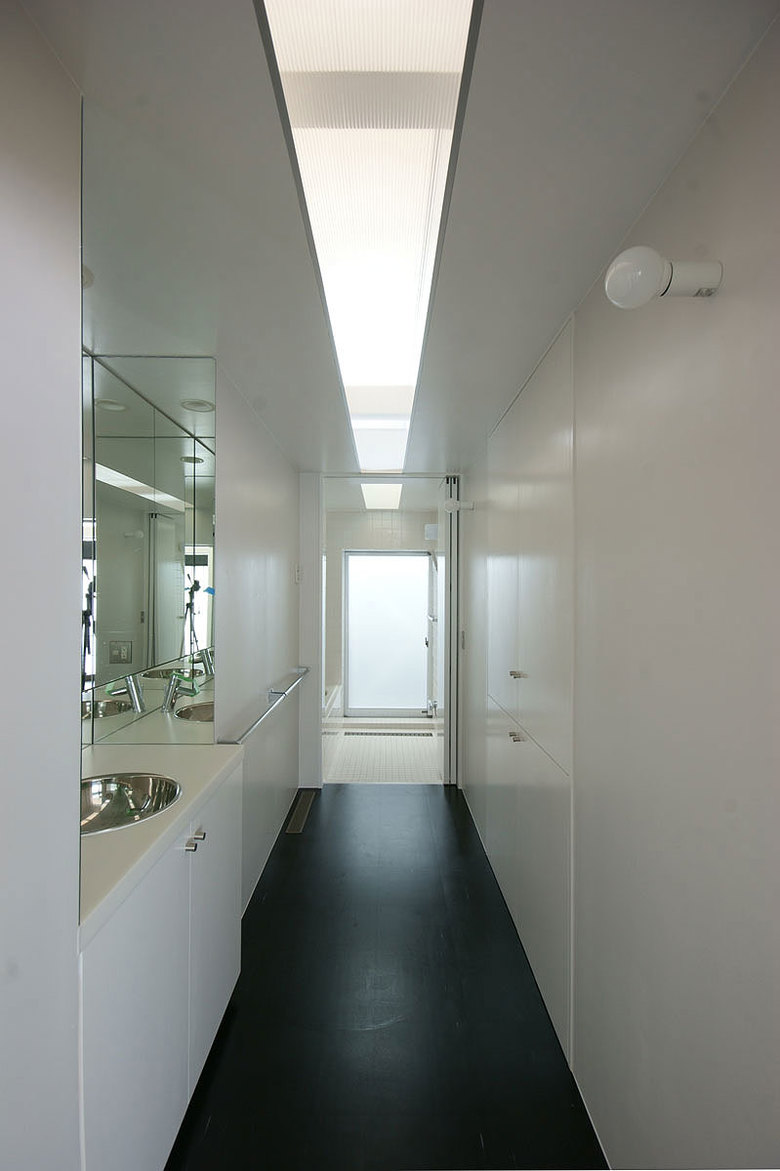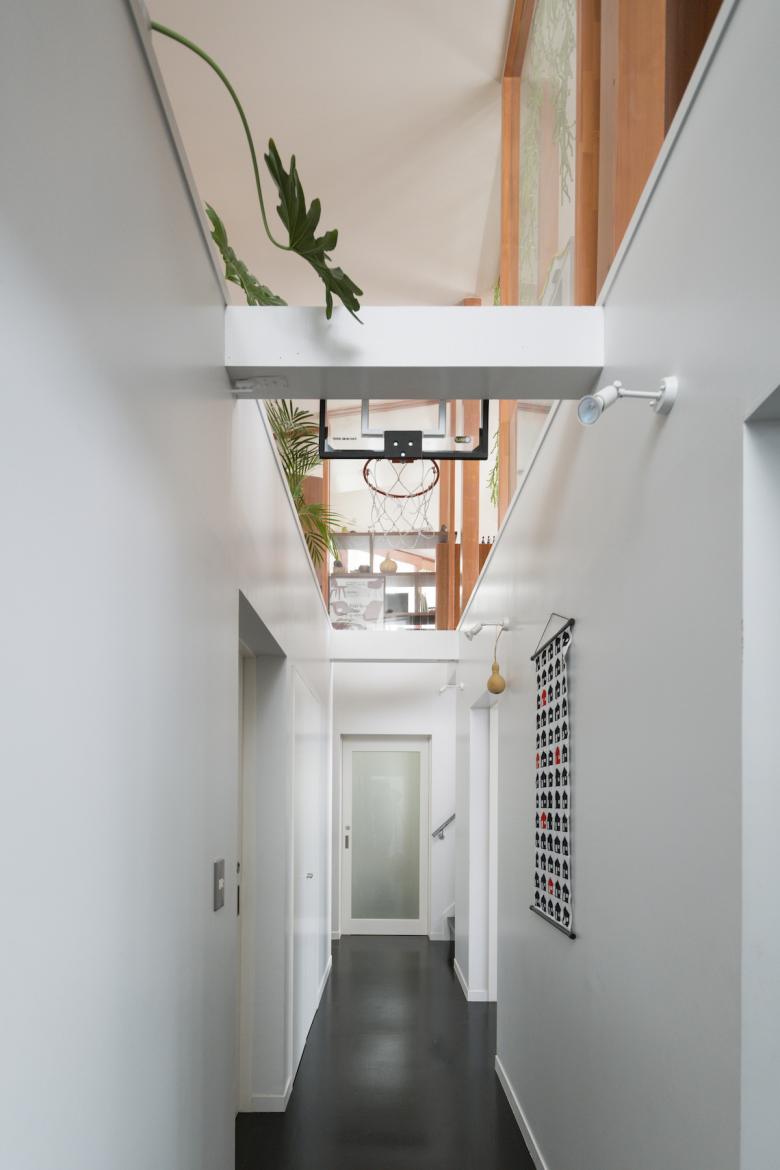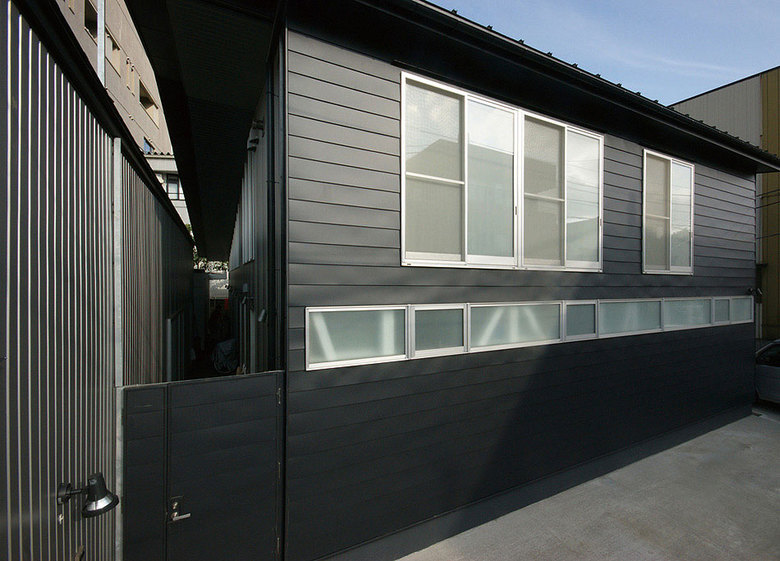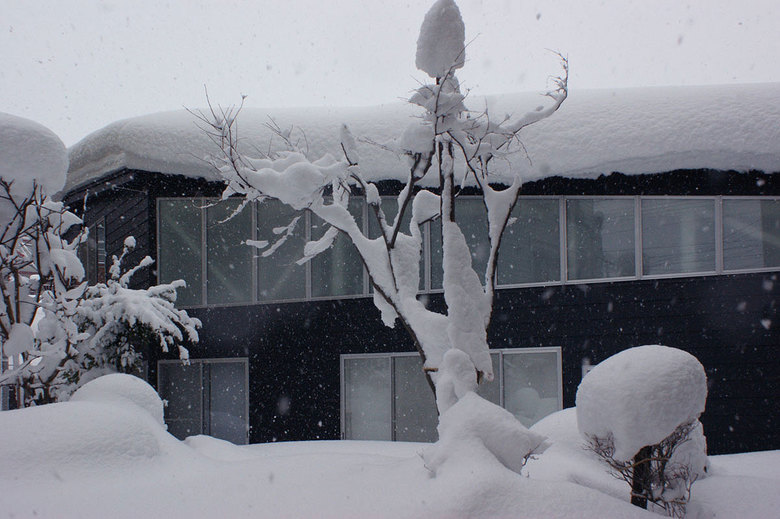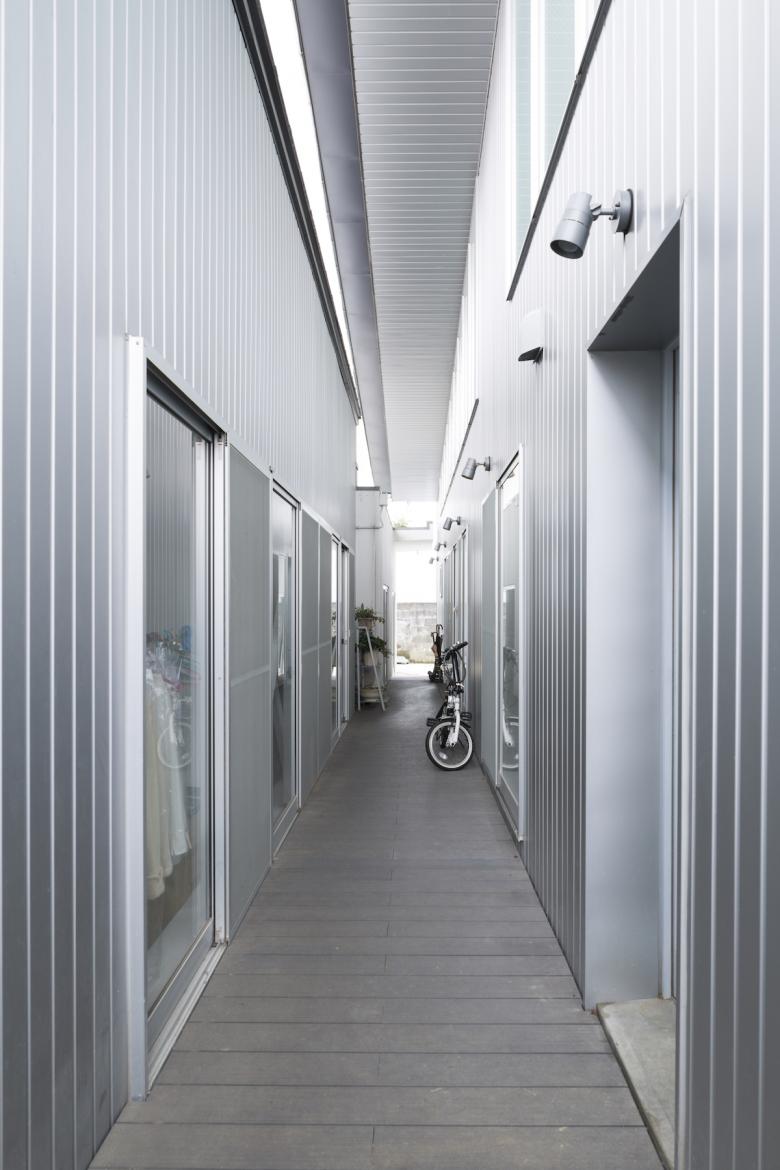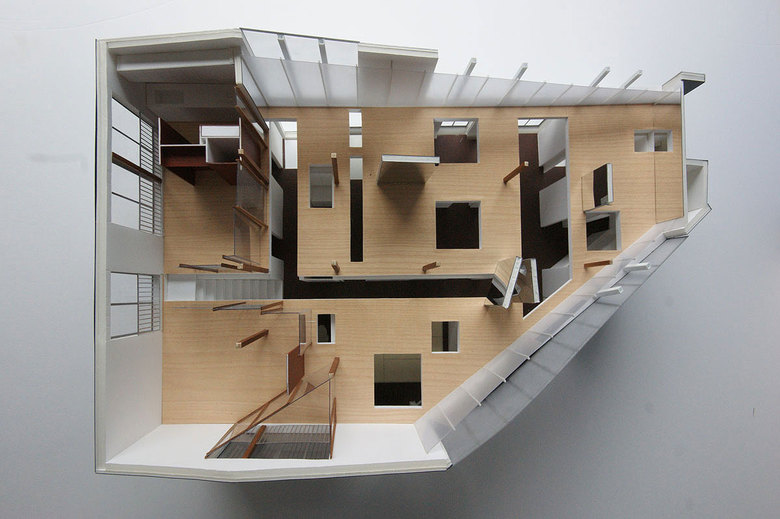House in Nagaoka
Retour à la liste des projets- Lieu
- Nagaoka-city, Niigata
- Année
- 2010
The house is located at the center of the city that belongs to one of the regions with the heaviest snow in Japan.
The old laundry factory was left on the site and only the house was rebuilt. Due to the building standard act, it was prohibited to connect the old building with the newly-constructed building. So, both were separated and connected by a small alley with eaves for avoiding snow.
The starting point of designing this house was the dark indoor scenery of winter. It is impossible to foresee the amount of snowfall until the winter ends. In the house before rebuilding, the windows on the ground floor were covered with the protection board against snow coverage of 3 meters at maximum from December until April, so, the family had to pass the life closed from the natural light in the rooms on the ground floor.
The clients required that they passed their life mainly on the ground floor in consideration of the aged grandparents. But, in the ordinary form of a house, their life would be separated from the natural light. So, as a solution, we proposed a house with a loft. The attic space of the pitched roof for sliding the snow was utilized as a loft and the natural light is introduced to the interior from the high side window higher than the accumulation of snow. The natural light reaches each room on the ground floor through the openings disposed on the floor of the loft. The large window for introducing the natural light is disproportionate in the region with a severe winter climate, but the high insulation efficiency was realized by installing a four-fold air layer.
The loft and the openings which were realized so evoked the new form of the family or the rise of sustainability.
"A new distance sense between the family"
The light of each room leaks from the openings on the loft floor as it becomes dark. It is vaguely reflected on the ceiling of the loft like the sky finished with high gloss paint and the family's sign is indirectly mixed in the loft. The house is different from " a house composed of common space and private room" and " a one-room type house" but creates a new distance sense between the family through indirect communication.
The loft is also a realistic space that places things, and the sign of the family on the time overlaps with the sign of the actual family.
The loft is isolated from the space where the small children move around in consideration of the accident.
"Consideration to the sustainability"
1. Natural light in the winter
The natural light falls to the ground floor from the high side window on the loft through the openings on the loft floor. The natural light diffuses the translucent glass and the twin-polycarbonate plate with distortion and is amplified by the mirror walls that are also the earthquake-resisting wall. Through those effects, each room on the ground floor has enabled to acquire enough illuminance without artificial lighting even in the daytime of the winter when the natural light is weak.
2. Total sum of the energy cost for 20 years
Air conditioning, hot water supply, and the snow melting system on the roof were selected based on the calculation of the initial cost, running cost, inspection cost, and exchange cost of various systems of different sources of heat and forms for 20 years. The costs except the running cost were included since those generate the energy consumption of the production or the transportation and are related to sustainability. From about 40 combinations, the air-conditioning that installs the electric heat pump system under the floor, the hot water supply by the generic gas water heater, and the snow melting system by the panel heater in which the hot water by the gas water heater circulates.
3. Air-conditioning System in consideration with energy-saving
The air-conditioning by electric heat pump system is installed underfloor and the whole space under the floor is utilized as an air chamber. The air goes out from the floor grill and, after circulating the interior, is drawn from the inlet port on the loft, then goes back to the air-conditioning machine via a ventilator of heat exchange type. According to the repeat of the circulation, the air of the whole interior is stable at the same temperature for an hour.
The whole house and whole space under the floor are covered with high-performance insulation so that the temperature drop would not happen after shifting to the energy-saving circulation. Therefore, the comfortable state that the gap in temperature doesn't exist in the whole house has been realized refraining the cost.
4. Exterior wall facing to the South
The one side of the house is cut obliquely and precisely faces to the South since the angle matches the axis of East-West directions. In the circumstance that the house is surrounded by buildings, doesn't open to the scenery, and is closed by the snow in the winter, this side suggests the cardinal points and the big world that spreads out outside.
At the culmination of the day when it was fine, sunlight makes the shadow that is perpendicular to the wall and is conscious of a change in the time. In the daytime of the winter, it becomes the direction where brightness is brought to the maximum.
5. Natural Light in the summer
This region is one of the regions where the temperature in the summer is highest in Japan. Since the windows are disposed on the South side and the North side and the height difference of the alley brings the chimney effect, the natural wind passes easily.
6. Earthquake performance
This region suffered heavy earthquake damage. Therefore, the length of the wall that the braces were installed is more than twice the necessary quantity of wall. Furthermore, since, in all walls, the structural boards are nailed directly on the pillar, beams, studs, and braces, the proof stress rises more.
In the loft. the earthquake resisting walls are covered with mirrors to weaken the sense of oppression and distort the light.
https://www.future-scape.co.jp/g2051engrishspanish/g205303works/g205303worksimage/g2053j29houseinnagaoka/g2053j29houseinnagaokaeg.html
